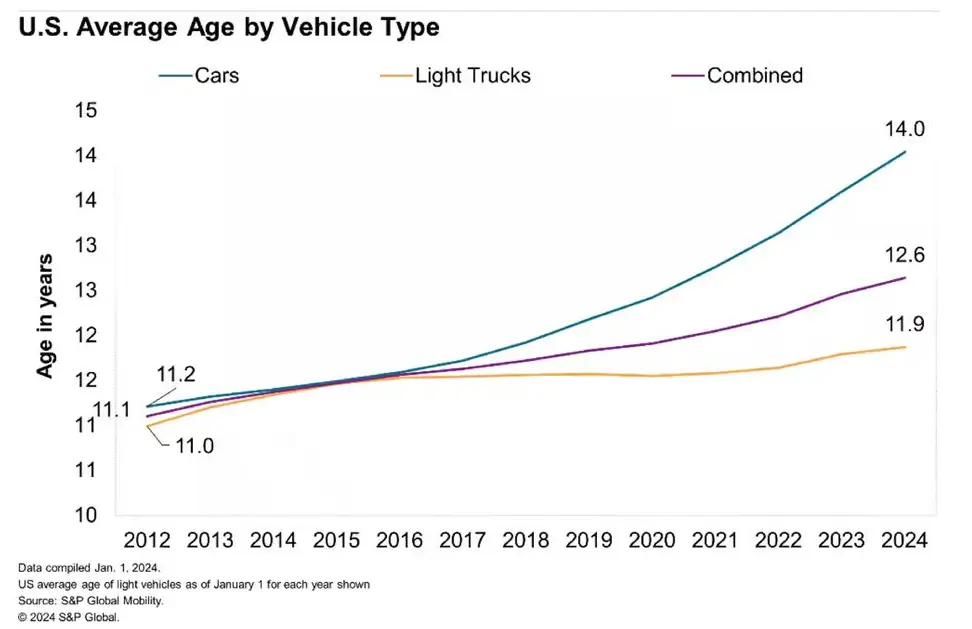A new report from S&P Global Mobility shows that the average age of vehicles on the road in the United States is up by two months compared to last year, bringing the average age to 12.6 years.
Introduction
The average age of vehicles on American roads is climbing, reaching a record 12.6 years in 2024, up by two months from the previous year. This upward trend has significant implications for consumers, the automotive industry, and aftermarket services. But what’s really driving this increase, and what does it mean for everyone involved? Let’s dive in and uncover some insights that you might not find elsewhere.

Average Age of Vehicles in the U.S. Hits Record High in 2024 (PDF)
Why Are Vehicles Getting Older?
The steady increase in the average age of vehicles isn’t just a fluke. Several factors contribute to this trend:
- Economic Uncertainty: Since the onset of the COVID-19 pandemic, economic uncertainties have prompted many consumers to hold onto their existing vehicles longer rather than splurge on new ones.
- High New-Car Prices: New-car prices have been soaring, with the average transaction price now over $45,000. This price hike has deterred potential buyers, pushing them to maintain their current cars longer.
- Improved Vehicle Durability: Advances in automotive technology and manufacturing have made modern vehicles more durable and reliable, allowing them to remain in service for longer periods.
Impact of Rising Vehicle Age on the Market
While some might see the increasing age of vehicles as a negative trend, it has some silver linings, especially for certain sectors:
- Aftermarket Services Boom: As vehicles age, they exit the warranty period and require more maintenance and repairs. This shift benefits the aftermarket service industry, including local repair shops and parts suppliers. Todd Campau from S&P Global Mobility highlights that vehicles aged six to fourteen years are prime candidates for aftermarket services.
- Used Car Market Surge: Older vehicles still in good condition fuel the used car market, offering more affordable options for those hesitant to buy new. This dynamic has kept the used car market robust, even as new car sales fluctuate.
What About the Future?
Looking ahead, several trends could influence the average vehicle age further:
- Electric Vehicles (EVs): As EV technology becomes more mainstream and affordable, we might see a shift in the average vehicle age. However, given the current price and adoption rate, this shift may take some time.
- Economic Recovery: If the economy stabilizes and consumer confidence returns, new car sales could increase, potentially lowering the average age of vehicles.
- Technological Advancements: Continuous improvements in vehicle technology will likely extend the lifespan of new models even further, possibly continuing the trend of older vehicles on the road.
Consumer Perspectives
For the average car owner, keeping an older vehicle running can be both a challenge and a point of pride. Many drivers are becoming more adept at maintaining their vehicles, thanks to accessible online resources and communities.
Plus, the environmental aspect of using a vehicle for longer can’t be overlooked—reducing the frequency of new car purchases can lessen the environmental impact of manufacturing and disposing of old cars.
Conclusion
The rising average age of vehicles in the U.S. tells a story of economic shifts, technological advancements, and changing consumer behaviors. While new-car prices and economic uncertainties push this trend, the aftermarket industry finds itself in a prime position to thrive.
As we look to the future, will the average vehicle age continue to climb, or will new factors tip the balance? Only time will tell. What do you think the future holds for the automotive industry?




